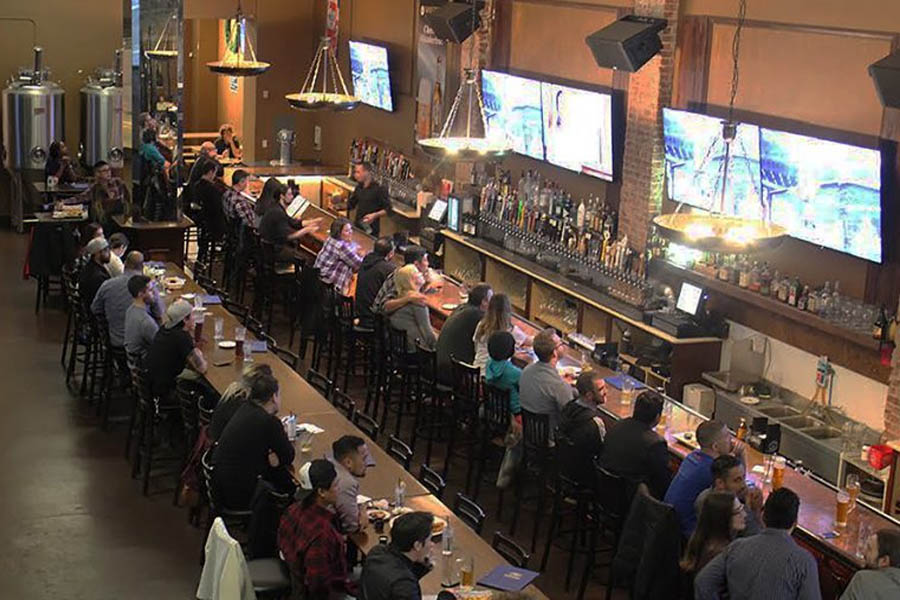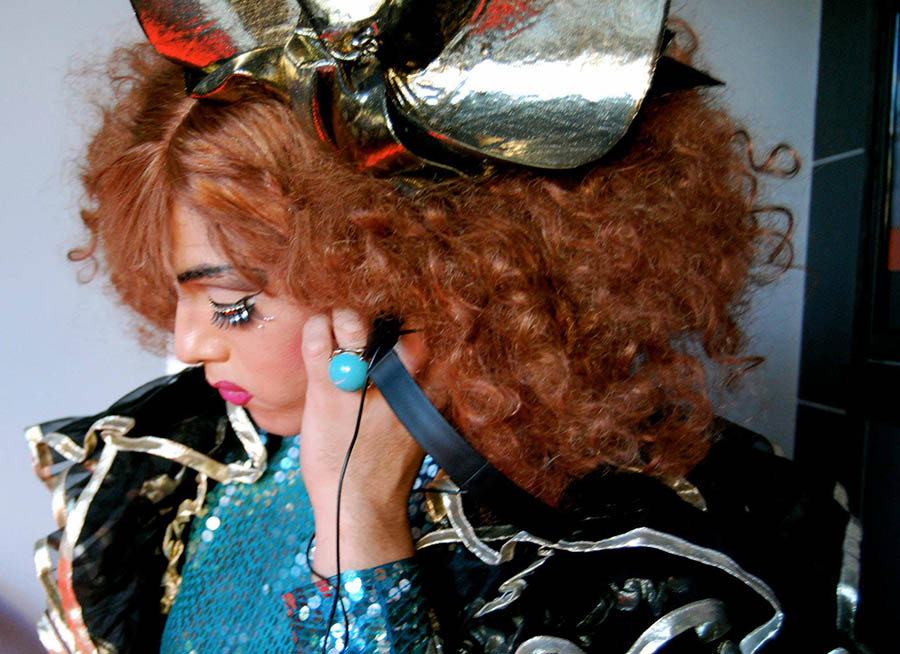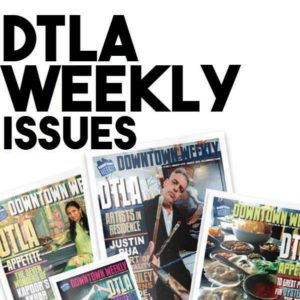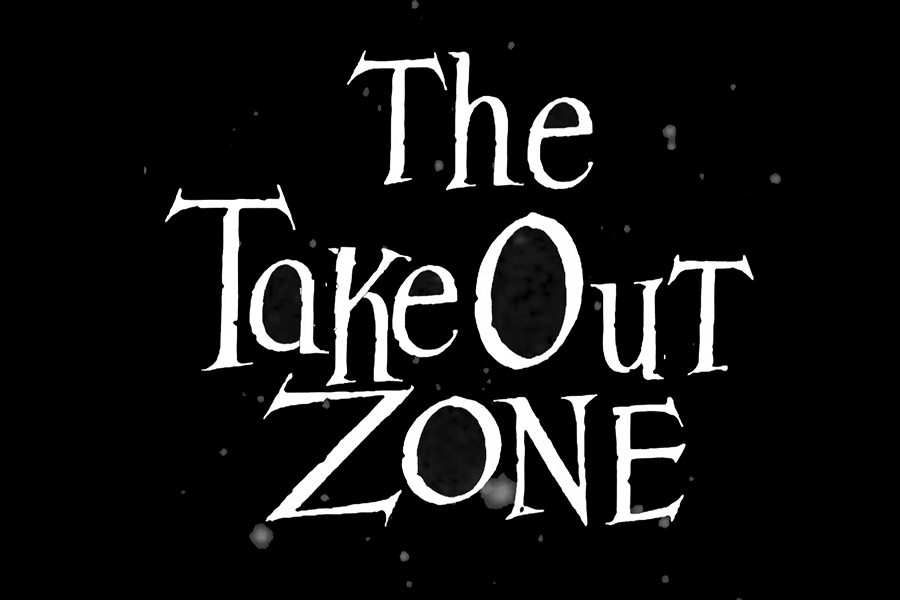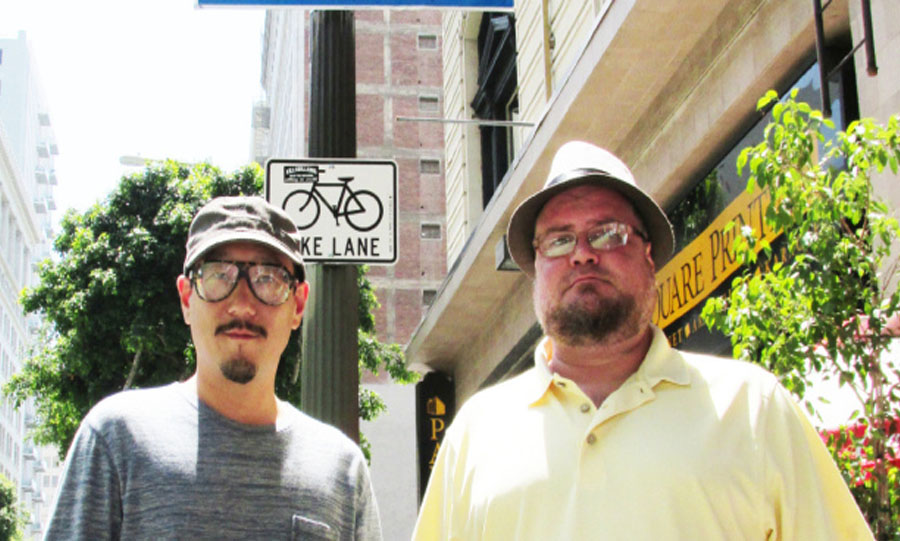
In 1996 Kjell Hagen moved into an abandoned building on Main Street between 2nd and 3rd. It was typical of that area in DTLA.
The window frames held no glass, the outlets drew no power, and, at the intersection of Main and 3rd, tumbleweeds might have rolled past the boarded up store-fronts.
Kjell recalls his first task at the location of filling a construction bin full of waste from the property and having it hauled away. From there he could set about making the building into something that matched his vision of a downtown art gallery.
Unknowingly at the time, in the years to follow, Hagen’s location would become the model for Downtown’s most successful galleries, artists receptions, and underground parties inevitably leading the City to establish Gallery Row and paving the road for what we now know of as, the Downtown Los Angeles Art Walk.
His abandoned space, after months of restoration would soon become Inshallah, an Arabic term for God Willing.
Inshallah which first served as a home and gallery for Hagen later in partnership with M.J Higgins Gallery, became known for one of the best times one could have in Downtown Los Angeles on a Thursday night.
At ground level, the gallery featured over 3500 square feet of high end gallery fixings in a quiet and calm setting.
Unbeknownst, to many however, a hidden entrance, that at one time in Downtown’s past, was controlled by playing certain keys on an adjacent piano, would raise a hidden door to a stair case that descended down to a speakeasy basement. This was only relevant to Hagen’s close friends and a handpicked group of downtowners who had managed to secure the secret coin or ever changing password to get in.
Once inside the speakeasy, live music, dancing, fun, and memories that, unfortunately for new downtowners will forever remain in the past. Guess you would have just had to have been there.
Inshallah, as it turns out, was aptly named. It required courage, and some faith, to open an art gallery there. But Kjell retells his story modestly. Sitting across from me, his solid build lends an imposing presence. But behind his spectacles, the light green eyes are gentle, and mischievious. They widen when he talks about his impressions of a neighborhood that was still floundering in 2002.
By then Kjell was established; a seasoned organizer. He had been arranging get togethers for artists well before 1996. He had a large gallery for relatively cheap rent. Yes, the area was considered by many to be a dead zone. But he had a space, a knack for throwing great parties, and he had a friend named Nik Cha Kim; a playwright who knew how to sell a story.
East Meets West
Myself, Kjell Hagen, Nik Cha Kim, and two publishers are sitting in Cafe Nine, located on the ninth floor of the Spring Arts Tower (453 South Spring St). One of the publishers, Andrew Lopez, is hooking a microphone onto Nik’s sweater. Andrew is putting together multi-media coverage of Gallery Row to coincide with the launch of his new downtown magazine DWNLA. To Nik, this is nothing out of the ordinary. He’s been forward about getting the word out on Gallery Row, and he’s at ease in the spotlight. Just as Kjell has surprised me by being conservative and gentle, there is more to Nik Cha Kim than meets the eye. Smaller than Kjell, with his cap pulled down low to oversized glasses, one might mistake him for a shy bohemian intellectual. But Nik’s speech is very direct, his manner completely matter of fact. He’s accustomed to saying what’s on his mind.
“I came to ask for Nik’s help on putting together a proposal,” Kjell says “I knew that he was a writer.”
Nik Cha Kim was absorbed in the world of theatre and film, as a playwright and video artist. They were two friends on different sides of the artistic spectrum. When Nik began spending time in Kjells gallery, other mediums turned his head. He started frequenting gallery shows, and meeting other artists. Soon enough, Kjell approached him with an idea.
Momentum
A series of bold and calculated moves ensued. They connected with community organizers Bert Green, Cheyanne Della Donna, and Kimba Rogers. Now five strong, they met with curators and developers, acting as go-betweens for separate entities that were struggling in the neighbourhood. Kjell managed to get himself elected to the Arts and Culture Seat of the Downtown Neighbourhood Council by throwing a party and asking the attendants to fill out absentee ballots.
“We ran a campaign,” they both laugh “A one night campaign.”
Soon after, Nik was named co-chair of the Arts Aesthetics and Culture Committee. When their initial proposal for Gallery Row was rejected by that committee, Nik and Kjell surprised them by deciding to take the matter straight to City Council. When Gallery Row met with early skepticism (there were only three galleries involved at the time) they threw an unveiling party to “show people what it could become.” Soon they parted ways with The Neighborhood Council to seek their own funding, and distance themselves from practices that they considered cumbersome.
“At the time Gallery Row needed momentum to keep going.” Nik Says. And momentum it got. The area became permanent host to six more galleries over the next nine months. Then the first Gallery Row Art Walk was born, like a child of the movement, that would grow up and walk off on it’s own.
“Gallery Row and Art Walk are two separate things now,” says Nik, adding “These businesses are here 24/7, not just every second Thursday.”
Moving On
What’s does the future hold for the two friends? After the forced closure of his gallery to construct the police parking lot, Kjell had to turn to other ventures. Every hour spent on the Gallery Row project has been donated time. Although he’ll be working with Nik to organize their 10 year anniversary celebration, he is no longer involved with running the non-profit. As we head down in the elevator to Spring Street, I’m thinking that this is as it should be. As with all successful projects the initial visionary must move on. And Gallery Row remains in capable hands. Nik Cha Kim will continue to run the show, and he has some future visions of his own. He revealed to us, and for the first time in public, that he’s writing a book about Gallery Row and it’s effects on downtown. He hopes to have it out by next year.


